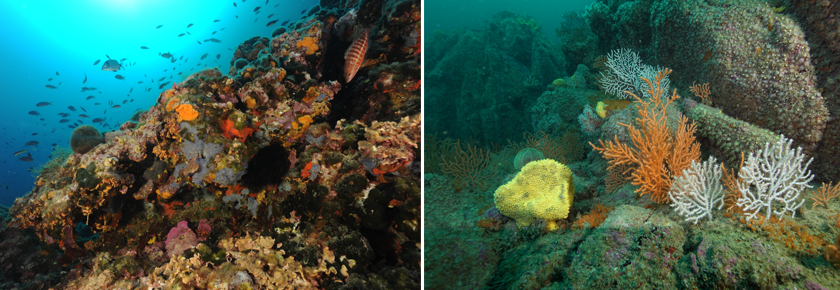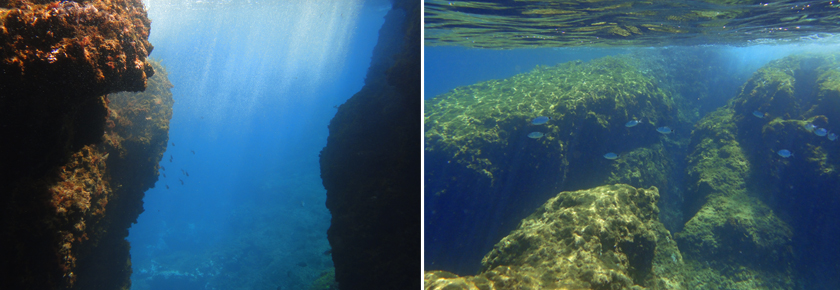
Understanding benthic habitats’ sensitivity to anthropogenic pressures is central to the effective management of the marine environment. Sensitivity assessments help to:
In 2014, the French Ministry of Environment requested PatriNat to coordinate a project on the assessment of the sensitivity of French (mainland) benthic habitats to anthropogenic pressures, drawing on expertise from the wider scientific community.

Habitat benthique de Méditerranée © O. Bianchimani – Septentrion Environnement & Habitat benthique de Manche © W. Thomas – Station Biologique de Roscoff
The methodological framework for marine habitat sensitivity evaluation, terminology, habitat and pressure units, methodological framework for marine habitat sensitivity evaluation as well as guidance on how to use the resulting evaluations are presented in the following methodological report published in 2016 (La Rivière & al., 2016).
This methodology was developed to produce standardised results and to be consistent (insofar as possible) with other equivalent European methodologies, in order to support risk/vulnerability assessments at a local, regional, national and international scale (under the HD, MSFD, OSPAR, etc.)
Habitat sensitivity is defined as the combination of its ability to tolerate an external pressure without significantly changing its biotic and abiotic characteristics (resistance) and the time needed to recover, once the pressure in question has been alleviated (resilience).
Sensitivity assessment to anthropogenic pressures involves the following steps:
This habitat sensitivity data will support the management of human activities in the marine environment.

Biocénose des algues infralittorales de Méditerranée © N. Michez
The sensitivity of Assessments of French benthic habitats' from the Mediterranean and the Atlantic-North Sea-English Channel regions sensitivity to physical pressures has been assessed following the method previously describes and are presented as matrices.
Each matrix presents, for each habitat/pressure combination:
All sensitivity assessments for the habitats units defined in the French national benthic habitat classifications (NatHab-Med classification for the Mediterranean Sea ; classification for the Atlantic, English Channel and North Sea) are available in a report as well as in separate Excel spreadsheets.
Sensitivity assessment to mechanical physical pressures :
Sensitivity assessment to 4 physical, chemical and biological pressures :